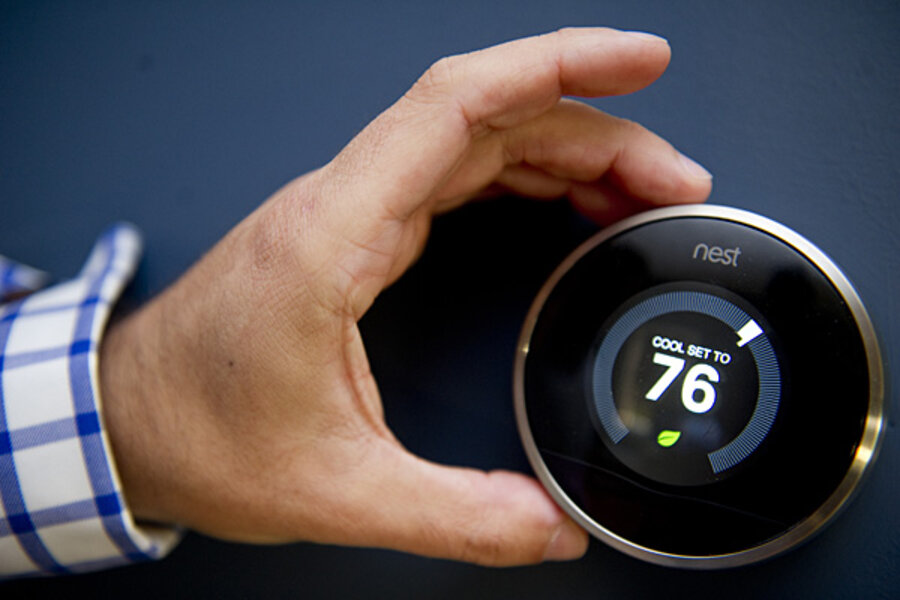Your thermostat is about to get 'smart'
Loading...
The thermostat of today is going the way of the rotary phone.
Taking a page from Silicon Valley's playbook, utilities and energy companies are designing "home energy management systems" (HEMS) to cut down on energy waste and make heating and cooling your home easier. At the core of the movement is a new generation of "smart" thermostats that leverage cheap sensors, data analytics, and other bells and whistles of the IT world to take the guesswork out of programming your thermostat.
It's an emerging field, expected to continue to grow as users come to expect of all devices the same intuitive design they get from their smartphones.
"[T]he combined factors of increased energy awareness, interest in home automation and security tools, and more user-friendly solutions have led to an uptick in shipments for residential smart thermostats during the past year and have revived a sense of optimism and excitement among vendors and stakeholders,” Bob Lockhart, research director with Navigant Research, said in a statement upon the release of the Colorado-based consultancy's October report on smart thermostats.
The global installed base of smart thermostats will grow from fewer than 1.4 million in 2013 to 31.9 million by 2020, according to Navigant's report. That's a lot of thermostats, but keep in mind that Navigant forecasts smart thermostats will still only make up about 4.7 percent of the global thermostat market in 2020.
If the market penetration doesn't blow you away, the technology might. Smart thermostats cast off the old, boxy, hard-to-read, programmable thermostats of yore, opting instead for the shiny, sparse visuals that might remind you of an iPhone.
Embedded sensors help determine the occupancy of a room, algorithms calculate when and by how much to adjust the temperature, Wi-Fi connectivity allows you to make adjustments and get feedback remotely. Some have even incorporated voice control, like this thermostat from Honeywell.
The Nest Learning Thermostat is perhaps the most recognizable of this next generation of home comfort control. Designed by former Apple programmers, the Nest "learns" your behavior over the course of a couple of weeks and then is able to adjust more or less on its own. Its savings are about on par with a typical programmable thermostat – about 20 percent off your heating and cooling bills – but the Nest aims to take the guesswork and human error out of thermostat programming.
Thermostats aren't the only part of home energy that's changing – so is the monthly utility bill. A crop of companies is experimenting with new ways to communicate energy consumption to end-users in real time via interactive online platforms.
"[T]he HEMS concept has entered the mainstream market," writes Kamil Bojanczyk, the author of a report released this summer by GTM Research, a Boston-based cleantech market analysis firm. "The next few years will mark a growth phase that will result in a number of company acquisitions, millions of homes subscribing to HEMS services, and product offerings that are more desirable for consumers."
At least five HEMS companies have surpassed 1 million customers, according to GTM Research's report, and the market for the technology is expected to grow from $1.5 billion in 2013 to over $4 billion by 2017.








